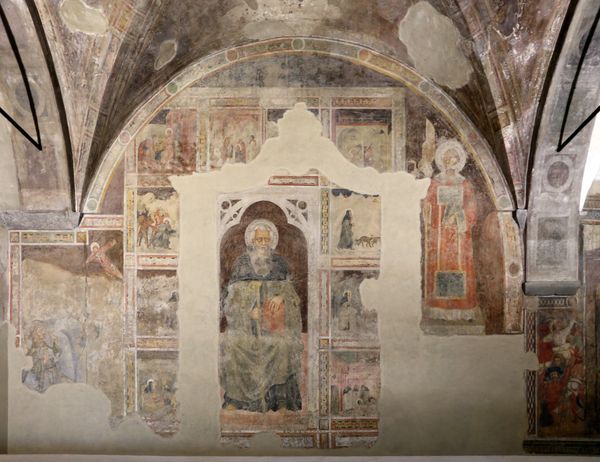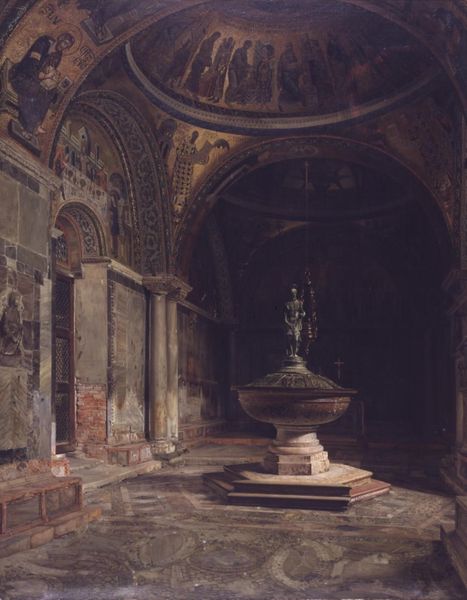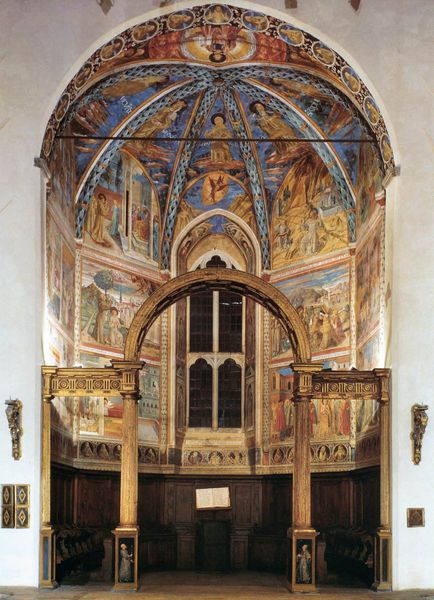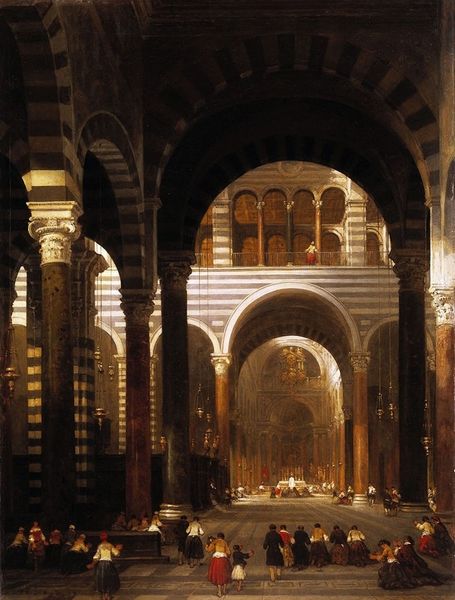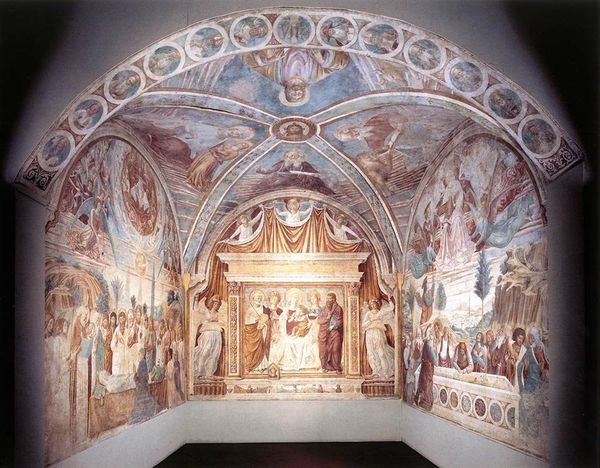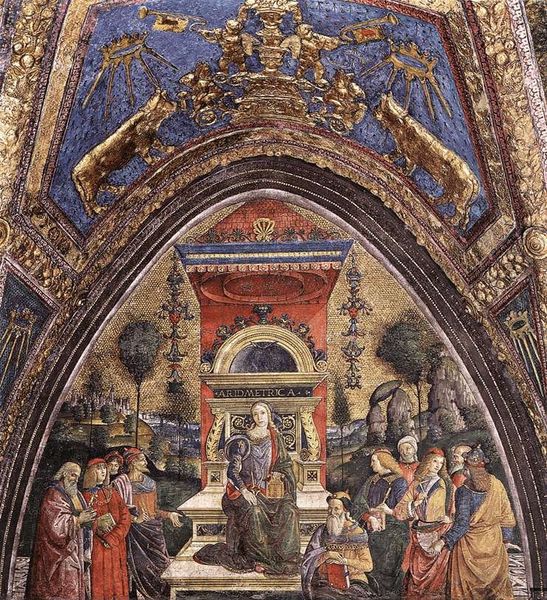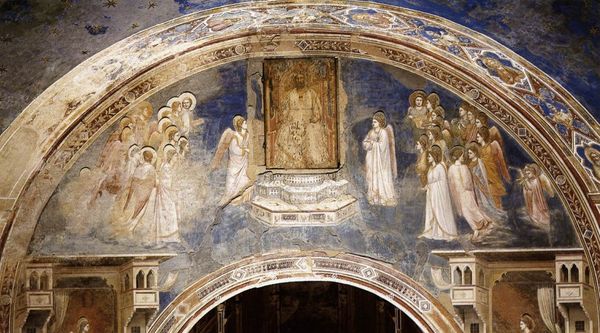
painting, fresco, architecture
#
portrait
#
byzantine-art
#
medieval
#
painting
#
figuration
#
historic architecture
#
fresco
#
history-painting
#
italian-renaissance
#
architecture
#
christ
Copyright: Public domain
Editor: This is "View of the Frescoes in the Left Transept" by Cimabue, dating back to 1283. The fresco covers almost every surface! It feels immersive, but also pretty damaged. What do you see when you look at it? Curator: The layers of history, both intended and unintended, are immediately striking. Beyond the architecture, we are invited to view frescos depicting biblical stories. Take note of Christ: his repeated image reminds us of Christianity as the religion of the Byzantine Empire. The symbolism of that icon continues to hold cultural weight today. What visual echoes do you notice? Editor: Well, the use of gold leaf gives a sense of importance and the blues feel so rich. I also notice how stylized the figures are. They're not really realistic, are they? Curator: Exactly. Remember, realism wasn't the primary goal. The aim was to convey spiritual truths, and the stylized figures helped to elevate the scene beyond the everyday. Consider also how these images served as a form of visual storytelling for a largely illiterate population. How does that shift your understanding? Editor: That makes a lot of sense! They’re almost like stained-glass windows, teaching stories through images. And that repetition of figures probably drives the message home, right? Curator: Precisely! These aren't just pretty pictures. They are carefully constructed narratives, embedded within a specific cultural and religious framework and deeply imprinted on the cultural memory of its time, for centuries after, even now. Editor: Wow, I hadn't thought about it that way. I see it as so much more than just an old painting now! Curator: And understanding the iconography unlocks layers of meaning. It's like learning a visual language that speaks across time.
Comments
No comments
Be the first to comment and join the conversation on the ultimate creative platform.
